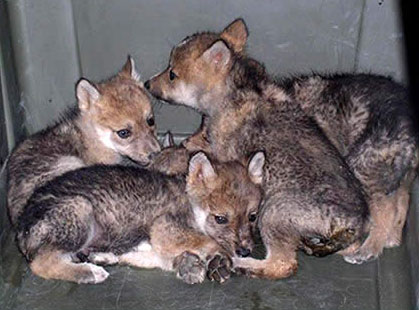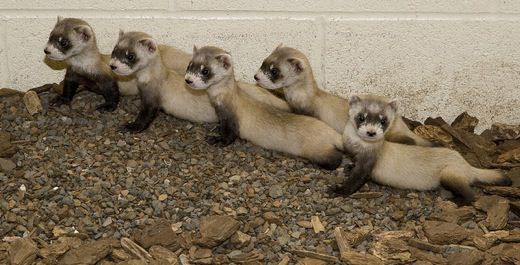by Hazel Anna Rogers
Throughout history, we have knowingly driven species upon species of animals to near or full extinction. In 2018, the last male Northern White Rhinoceros died in Sudan leaving two impotent females to die, a forced downfall of the magnificent species resulting from poaching and deforestation. The elegant passenger pigeon, once a prolific species filling the skies of the world in colossal migrations with their blue, purple, and hazel plumage were hunted to an untimely death. In 1914, the last female Passenger Pigeon, Martha, aged 29, died at Cincinnati Zoo. The bright orange Golden Toad was declared extinct in 1994, propelled to extinction by climate change, destruction of its native habitats, and pollution.
The impacts of the deaths of these species on the ecosystems they inhabited, the plants they pollinated, and the balance they cultivated through their harmonious existence with their surroundings is incomprehensible. Our world, carefully crafted over centuries of evolution, is now being crafted by the inexperienced hand of man, often fueled by greed and capital interest. And how do we propose to give back? Captive breeding, a process designed to revive populations of animals at the brink of extinction by raising young to adulthood and breeding existing adult populations.
Seems like the right thing, no? Not only are we encouraging diversity of the animal landscape by reintroducing species we would have lost, but we’re rejecting the culture of excessive hunting by protecting a dying species. In a sense we’re fabricating our own, human-centric ideal of how the natural world should be. And there-in lies the problem. Our approach is anthropomorphised, relevant to our own interests above those of the earth. Rather than changing our polluting habits such as over-farming, excessive plastic production, destruction of habitats, and burning of fossil fuels, we simply reject our guilt of driving animals to extinctions by clinically manipulating the trajectories of their populations. But our capability to manipulate the natural world offers us the chance to act benevolently in the shadow of our hunting ancestors. The issue is, the ‘second chance’ we are giving to these animals seems, in fact, a second chance for ourselves.

Mexican Grey Wolves bred in captivity. Photo: Lobos Of The Southwest.
This is not to say that captive breeding programs are not sometimes wonderfully successful. Black-footed ferrets, a large mammal of the weasel family native to the Americas were listed endangered in 1973 under the Endangered Species Act. All 18 animals known to exist were placed in captive breeding, then brought back in 1994 into Badlands National Park. A thousand or more are now known to be living throughout the wild. ( See: https://www.smithsonianmag.com/science-nature/black-footed-ferrets-and-other-endangered-critters-177077430/ )

Bald Eagles, once threatened to near-extinction by the synthetic pesticide DDT were reintroduced to the Channel Islands National Park in California in 2002-2006 and are thriving in multiple states throughout the US.
With our relatively newfound understanding of the role that each animal plays in supporting a healthy ecosystem, our encouragement and intervention into re-establishing the populations of many animals has foundations rooted in more than just our own guilt. Our increasing insight into the intricate balance of the earth is vital to its survival, and organizations such as Greenpeace are in a constant battle to protect the planet against environmentally damaging interests. But how far can we actually go to produce change? Where do the well-meaning actions of humans fall short of making a difference? An animal living in captivity is often so very markedly dissimilar to one living wild, and these variations can often make the difference as to whether or not it is possible for them to be fully released into the wild. Stud 327, a South China tiger born and bred in captivity was brought to meet a wild female named Cathay in 2007. She was met by panic and roars by a male so utterly confused by his new surroundings and the movements of the female that he couldn’t interact properly. This is the fundamental problem with raising and releasing captively bred animals into the wild. Nature holds in its foundations a complexity much deeper than our surface level understanding, and taking that complexity into our hands creates a whole series of ethical and practical issues, beginning with one question; is it actually good to raise a wild animal in captivity?
Even with the very best of intentions, animals raised in captive surroundings often become ‘domesticated’ to some degree. When animals under conservation are placed in zoos or sea life centres, they often develop strange and unnatural habits as a result of constant human interaction, leaving them unsuited to their native hostile environments. Anti-predatory behaviour is often actively encouraged, particularly with big cat species in zoo settings. But how can these animals be expected to live in situations outside of their human dependency when they have developed a domestic ‘softness’, lax hunting ability, and (in prey) reduced vigilance?
Genuinely successful breeding programs are ones that reject any sort of human interaction with the animal in favor of ‘puppet’ breeding. Realistic puppets are used to raise young to adulthood, along with surroundings simulated to sound and often look like their own habitats in the wild. This approach is not always successful, as seen with captive breeding of the Californian condor. Some reintroduced young condors were found in the 1990s playing in the home of Californian resident Les Reid, displaying completely uncharacteristic condor behaviors.
In watching and nurturing these animals as they grow we are, in some sense, playing God, using our technological capabilities to numb our ancestral guilt while simultaneously having the potential to enjoy our handiwork. That is not to say that this work has not been beneficial to the planet or the animals themselves, and the many success stories of captive-bred animals going on to live full lives in the wild is testament to the importance of our use of our own intelligence to save our unknowing furry, slimy, and scaly friends from a forever death. But in a world of factory farming, selective pet-breeding, and animal extermination, do we need to look further into our approach to animal protection? Is there more to conservation than the animals we deem require saving? The habitats of many of the animals we are trying to save are being eradicated to make space for soy and corn crops grown for the purpose of feeding our ever-growing demand for farmed meat. Pesticides sprayed onto these crops are fed into waterways from rain, causing pollution in waters throughout the world. What is the use of captive breeding without any space for reintroduction, with the constant danger of human destruction threatening to dramatically damage the environment?
I think our efforts to save the world we live in are vital and it’s inspiring to see that man can use his creativity for something outside of capitalistic consumption. There are so many individuals and companies joining together to fight against deforestation, fracking, marine drilling, trophy-hunting, and illegal poaching, and it is so wonderful to see such a universal fighting spirit for the good of something outside ourselves. But addressing the problems closer to home, those we have difficulty facing up to such as our hungers for meat, dairy, and fish perhaps need to also come up when we talk about endangered species, habitat destruction and pollution. Too often, powerful interests result in the truth of our environmental impact being shielded from our eyes. We can consciously choose to fight this conspiracy of silence too, as vigorously as we fight to save all these species from their premature demise.
==========
Homepage: Carl Kruse Blog
Contact: Carl AT carlkruse DOT org
Last post: Plastics to Prosthetics
Give to worthy organizations next time Giving Tuesday comes around.
